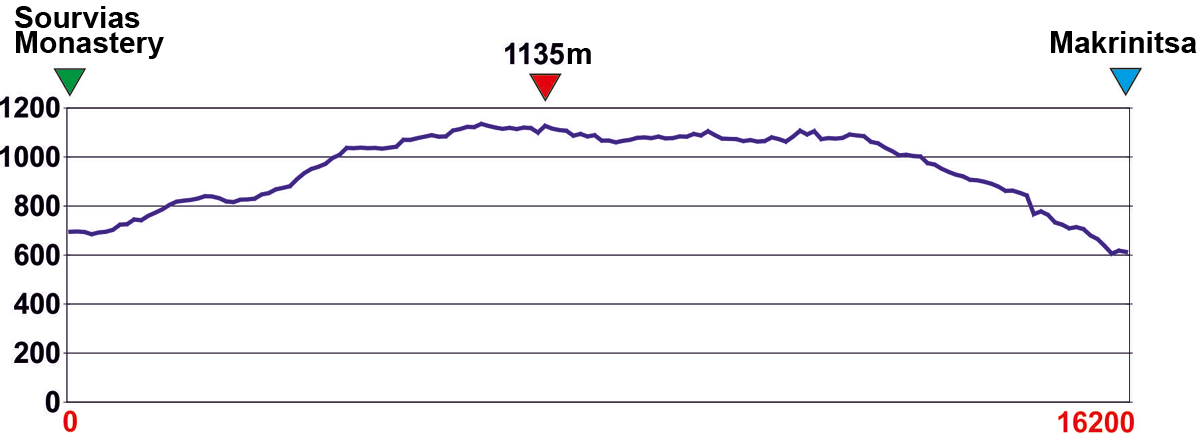The third section of LPT connects Sourvia monastery to the village of Makrinitsa.
The valleys we meet west of Sourvia monastery used to be inhabited sporadicaly in the past where much of the activity was concentrated around the rural settlement of Panagia Leschiani. Nowadays, the area is remote and quiet. We meet hardly any dwellings until we reach the location Trano Isoma where there are a few rural cottages.
The scenery changes noticeably when we start hiking on the horsts above Makrinitsa. The liveliness of this blessed land is strongly reflected on the hustle and bustle of the large center and on the numerous settlements, spread across the semi-mountainous slopes between Portaria and Makrinitsa.

THE SETTLEMENTS
Sourvia Monastery
Sourvia Monastery is an historical monastery built in the 16th century and it’s dedicated to the Holy Trinity. It’s the place where the first important battle between Thessalians and the Turks was given, in January 1878. After an epic fight and exodus of the rebels, the monastery was set on fire. During the Turkish Occupation, the monastery was transformed into a printing workshop. Nowadays, the monastery belongs to the major monastery Flamouri and its renovation is under process.
Makrinitsa
Makrinitsa is one of the most traditional villages of Pelion. Its close distance to Volos, the well-preserved historical buildings and the majestic view to the bay of Pagasitikos make them a perfect tourism destination. Besides its natural beauty, Makrinitsa offers a lot of choices in accommodation, nightlife and gastronomy. The large town square with the beautiful fountains and the wonderful view to the sea is the distinctive spot of the area.
Makrinitsa is named after the monastery of Holy Mary 'Oxia Episkepseos' or Makrinitissis, which was built after the first Fall of Constantinople by the Crusaders in 1204. Then, during the 18th century, the settlement started expanding rapidly due to the growing trade and tanning. By the beginning of the 19th century, Makrinitsa had become the most dense populated town of the region, hosting many majestic manor houses following the traditional architectural style of Pelion.
The museum of Folk Art and History worth definitely a visit. Housed in the Topali mansion and built in 1844 is preserved as a Historical monument. Today, Makrinitsa counts 694 citizens and belongs to the municipality of Volos.
Tips
Even though a great part of the trail follows dirt roads, walking on them isn’t boring but relaxing and enjoyable.
However, there are no high trees to provide shade and the hike on this section is not advisable during the summer months and when the temperature is high.
The phone signal strength is low in the inner part of the slopes and in the ravines.
We find drinkable water at the start of the trail, where there is a trough, and at the large fountain of Profitis Ilias.
Warnings
We might meet horses or mules by chance which are used for logging, as well as dogs at the huts of the farmers. In this case, don’t move in a rush and try not to scare them.
A few logging trucks may move along the forest tracks, yet rather rarely.










